First published February 2023 | Words and photos by Vietnam Coracle

Tom Divers is the founder and creator of Vietnam Coracle. He’s lived, travelled and worked in Vietnam since 2005. Born in London, he travelled from an early age, visiting over 40 countries (he first visited Vietnam in 1999). Now, whenever he has the opportunity to make a trip, he rarely looks beyond Vietnam’s borders and his trusty motorbike, Stavros. Read more about Tom on the About Page, Vietnam Times and ASE Podcast.
At dawn, the steep valleys due north and east of Cầu Đất – a village in the Central Highlands – fill with an ethereal mist which levitates above the Đa Nhim River, shrouding the mountaintops and pine forests in a diaphanous veil. In the bracing highland temperatures, the landscape waxes and wanes beneath the cloud, illuminated by the crisp morning light. This haunting and beautiful spectacle has given rise to săn mây – cloud-hunting – an increasingly popular activity for young Vietnamese travellers. Cầu Đất is a centre for cloud-hunting, but the surrounding landscape is also excellent for wild camping and pleasant hikes along narrow paved lanes through the forests, fruit orchards, tea and coffee plantations, and down to streams and rivers. Independent camping, hiking and cloud-hunting in the valleys of the Cầu Đất highlands is a memorable, engaging and active travel experience, and a good alternative to camping in Dalat.
*Respectful Camping: If you wild camp in Vietnam, please do so respectfully & safely. Be prepared, be sensible, be conscious of the people & natural environment around you. Please read the Safety & Hazards section.
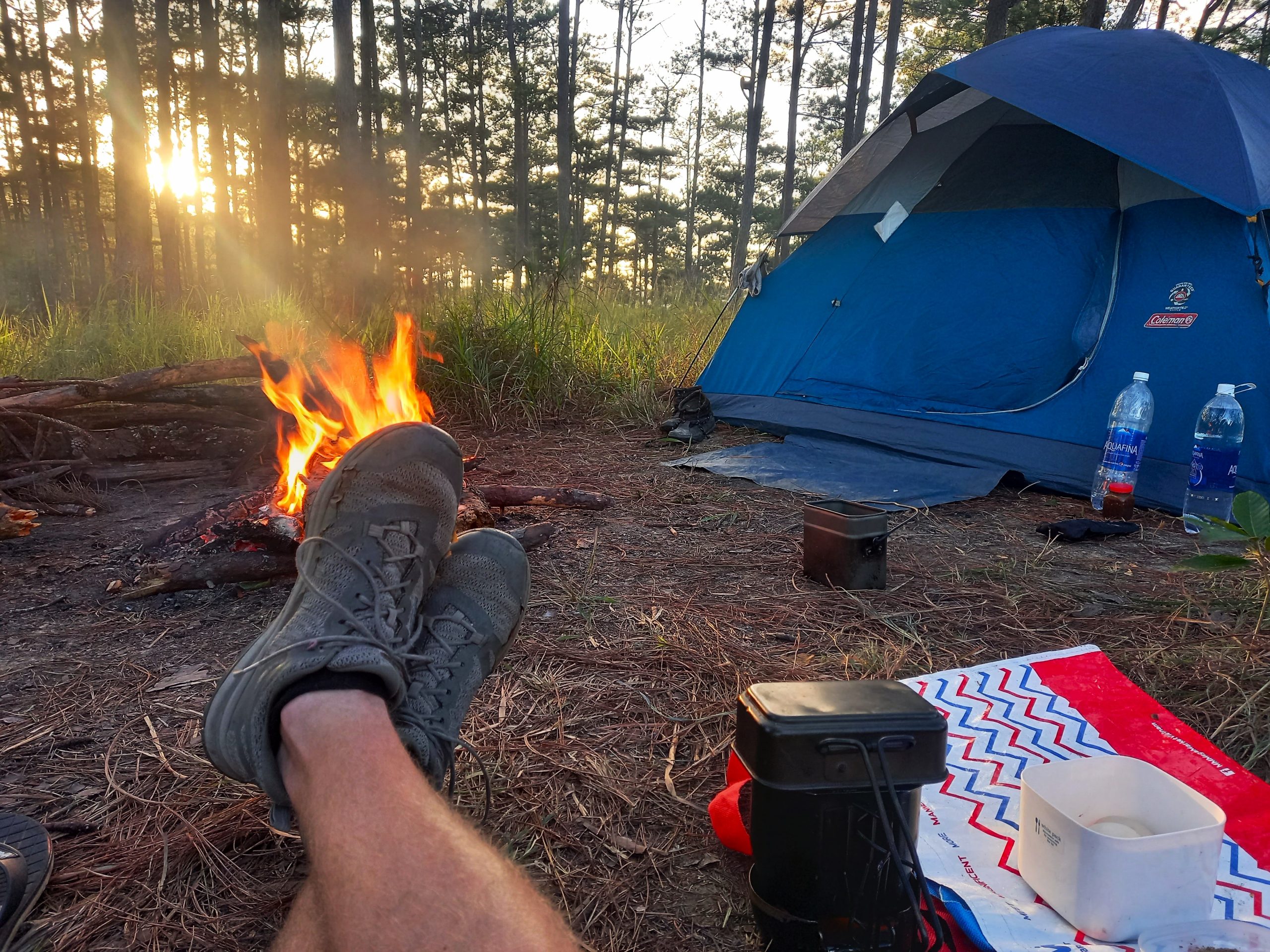
[Back Top]
CAMPING & CLOUD-HUNTING IN CAU DAT
Pitch a Tent, Watch the Clouds, Hike the Valleys
Below is my guide to wild camping, hiking and cloud-hunting in the Cầu Đất highlands. This guide is intended for people who want to travel independently, not on a tour. I assume that travellers will have a motorbike (either their own or rented). However, if you’re a keen hiker, it’s also possible to do everything in this guide on foot. You’ll need to come fully prepared if you want to camp here (see Equipment Check-List), but it’s also possible to come just for the day to ride/hike around. (For more camping guides, see Related Posts.)

CONTENTS:
Hiking, Cloud-Hunting & Activities
Support Vietnam Coracle
Please make a donation or become a patron if you enjoy this website. Vietnam Coracle is totally free & independent. I never receive payment for anything I write.
Thank you, Tom
MAP:
Camping, Hiking & Cloud-Hunting in Cầu Đất Highlands
Location & Campsites:
Cầu Đất is 20km due southeast of Dalat on road QL20. The village sits on the cusp of the Đa Nhim valley, a beautiful region of steep, pine-covered mountains, smallhold coffee farms, fruit orchards and tea hills. The tea plantations rise to the north and east behind Cầu Đất village, as do giant wind turbines which dot the hills like the landing zones of extraterrestrial spacecraft. The tea hills and turbines have become local tourist attractions. From the top of the hills – beneath the splayed rotors of the wind turbines – the land falls away to reveal extensive views due north down into the Đa Nhim valley and across the pine forests. In the early mornings, when temperatures can fall below 10°C, the valley fills with mist creating an eerie, ‘haunted’ atmosphere and giving the impression of being above the clouds; looking down on the skyscape from a great height. To make the most of this photogenic occurrence, platforms, tents and selfie-parks have been erected on the hillside to facilitate săn mây – cloud-hunting.
This is worth a visit as part of a day trip from Dalat on the Tea Hill Route. However, it’s increasingly commercial, touristy, and can get crowded on weekends and public holidays. To really experience the Cầu Đất highlands – with its forests, valleys, streams, small farms, hiking and cloud-hunting opportunities – ride beyond the tea plantations and the turbines, due north of the village and into the landscape proper. At least half a dozen small paved lanes and narrow concrete paths extend like branches north of Cầu Đất village heading in the direction of the Đa Nhim River. Over the hills, into the pine forests, through the orchards and farms, and down to the river itself, these little lanes offer access – on two wheels or on foot – to a wide area (shaded red on my map) where there are many good potential sites for wild camping. Indeed, Google Maps suggests there are several camping and glamping grounds already dotted about the area, but in reality we didn’t come across any. As always, finding the ‘perfect’ campsite takes time and effort, but after some searching you’ll stumble upon an ideal patch of land. Bear in mind that some of the paved lanes are very narrow and extremely steep: ride carefully and be sure your motorbike is in good condition. (Please also read the Safety & Hazards section for more information about choosing a campsite.)

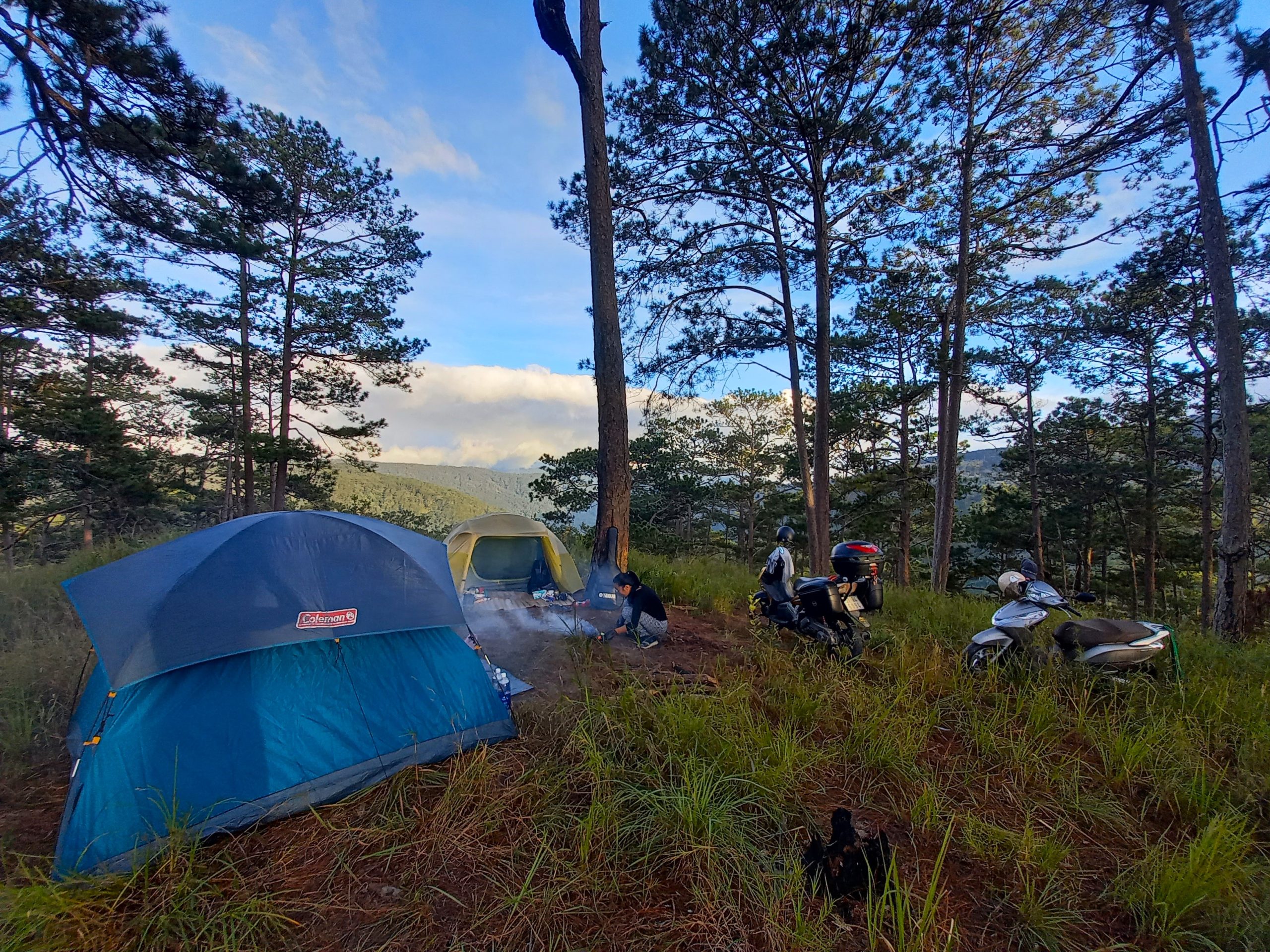
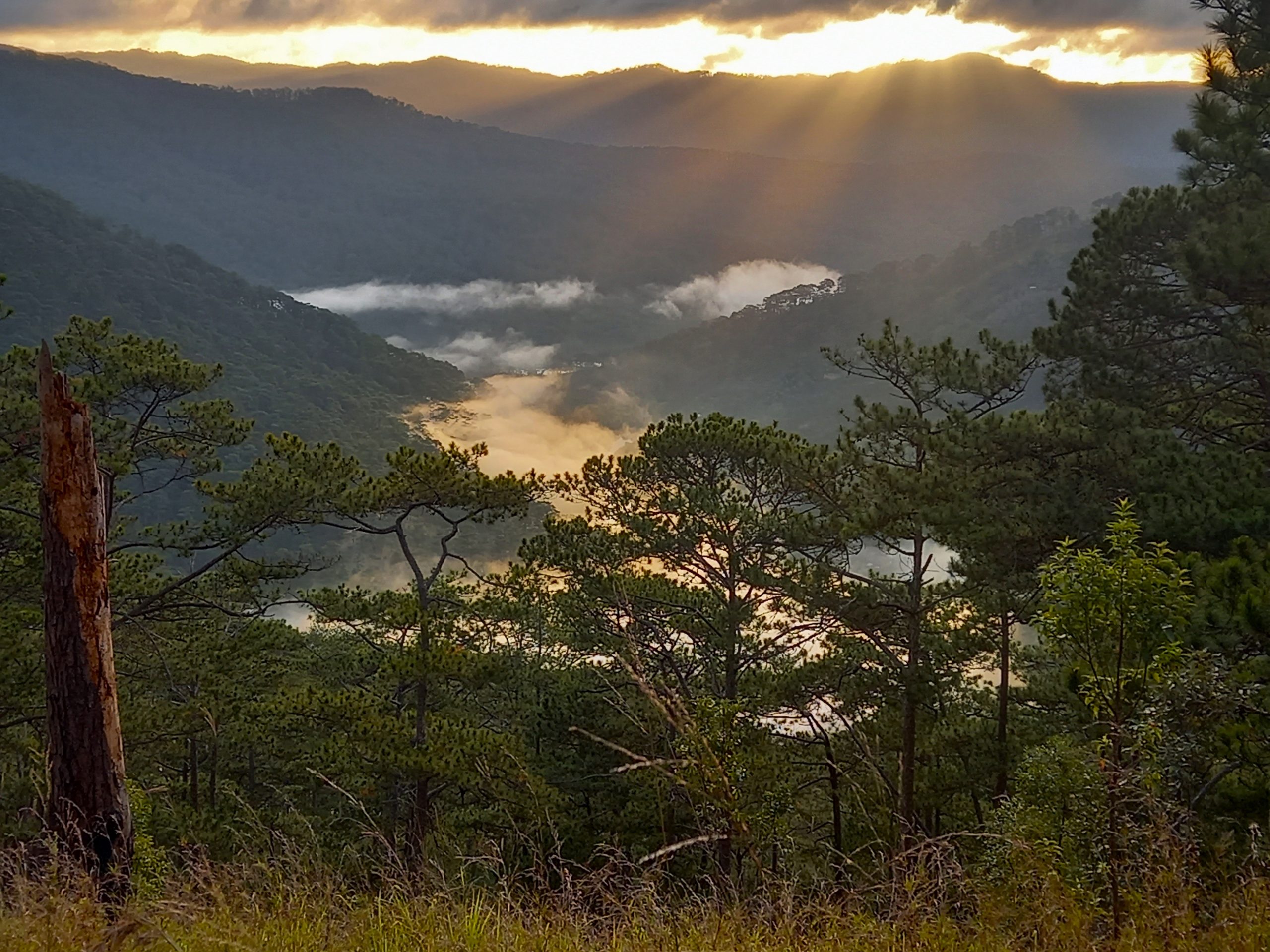
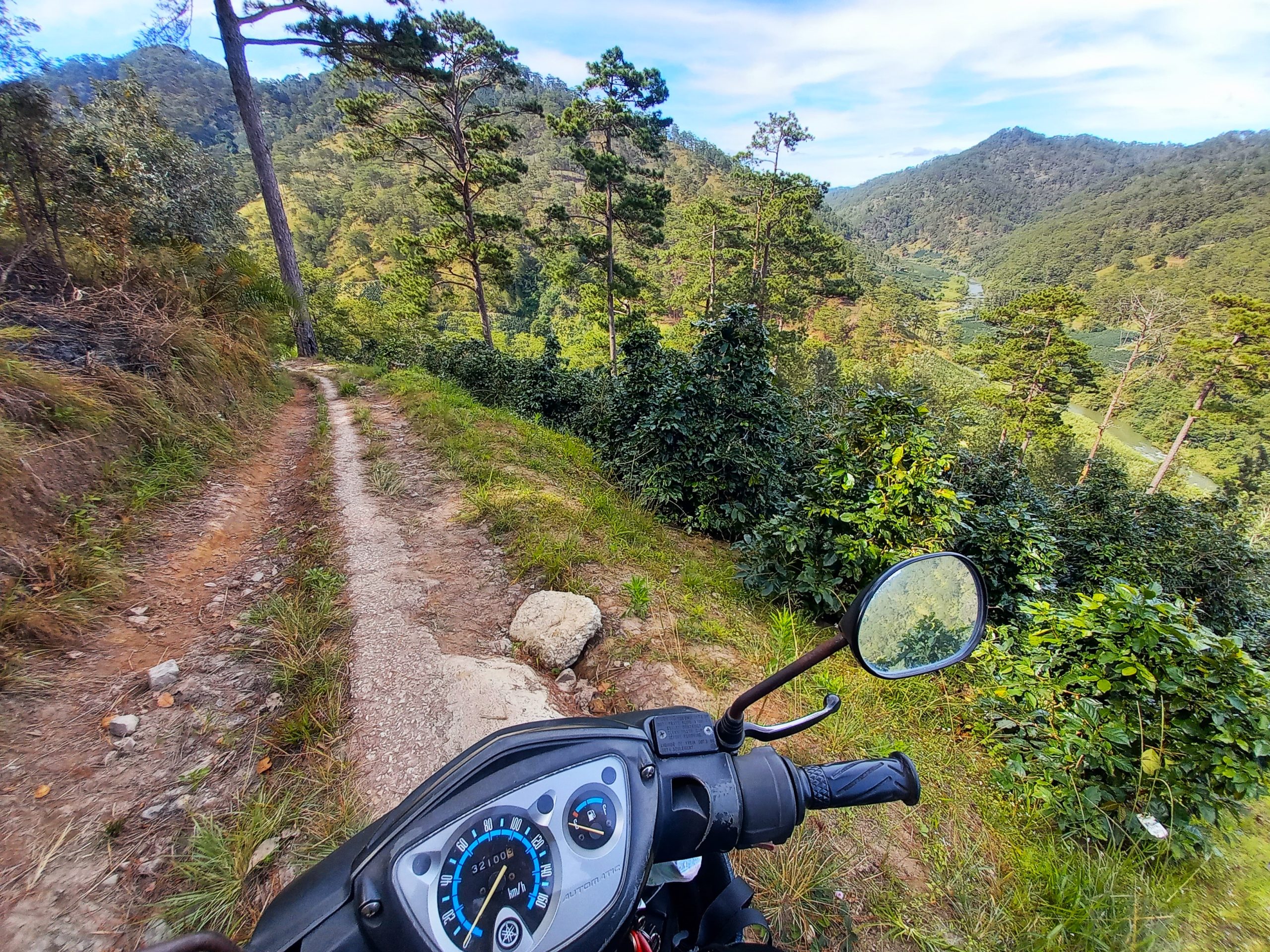
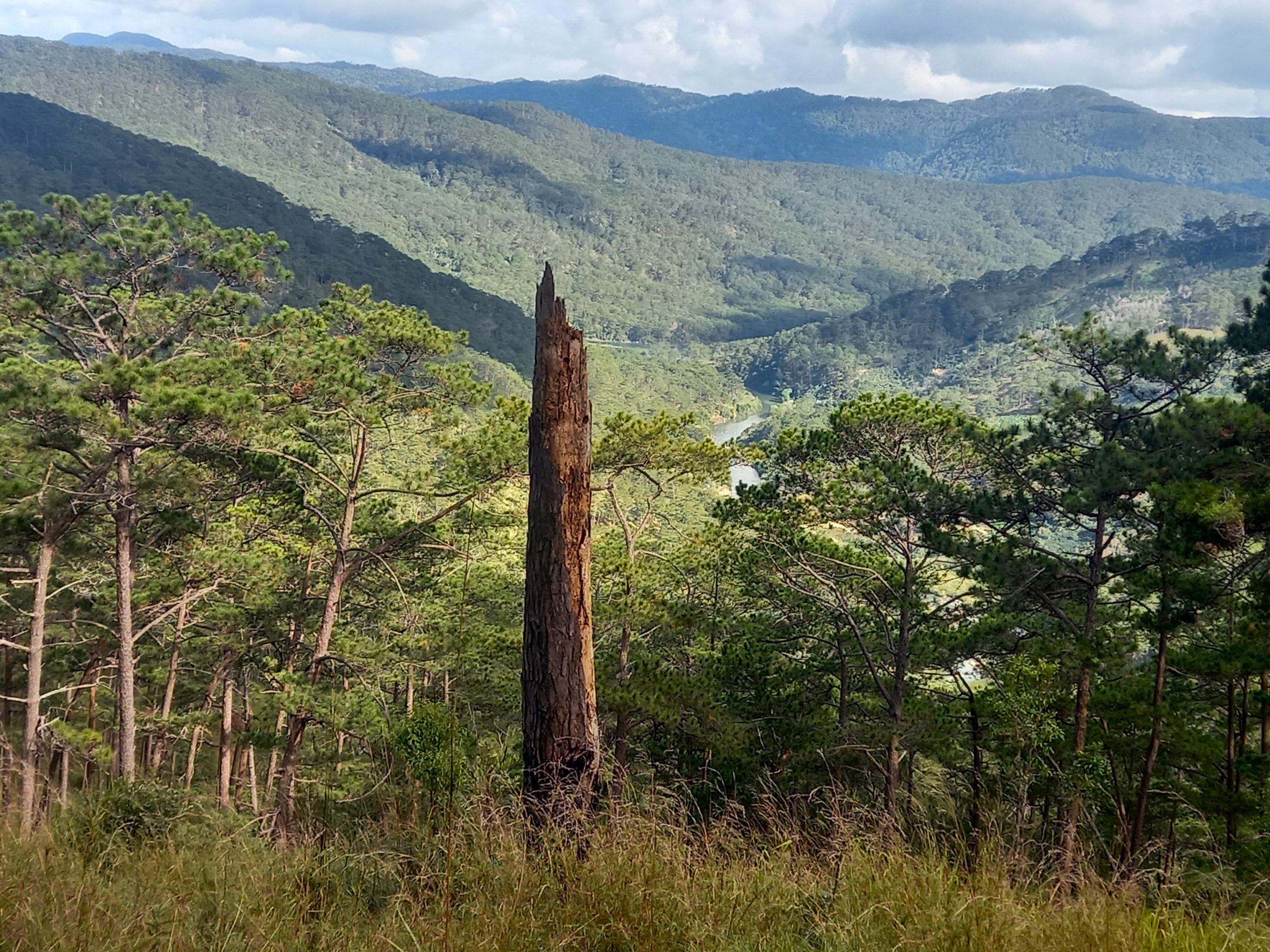
Hiking, Cloud-Hunting & Activities:
One of the joys of wild camping in the Cầu Đất highlands is that there are lots of outdoor activities to keep you busy during the days. Many of the small paved lanes turn into pathways that lead through the pine forests, coffee plantations and fruit orchards, passing tiny log-cabin dwellings in the woods, and ending up at streams, cascades or the Đa Nhim River itself. Hiking these pathways is a very enjoyable way to spend the day. Bring a little picnic, walk down the valley to a stream, have a wash in the cold water and climb back up to your campsite. The exercise is invigorating, the views are superb, the light is crisp, the air is fresh, and the little details – wild flowers, birds, fruits, herbs, farmers and farmhouses – are fascinating. The streams are good for bathing, but not big enough for swimming. However, if you can make it all the way down to the Đa Nhim River, it is possible to swim there. But you need to be careful: the current is strong and the flow is regulated by dams upstream. (See the Rivers & Dams section.)

If hiking is too much effort, you can also ride a motorbike down some of the paved lanes in the area but, remember, they can be very steep, indeed. Another potential excursion by motorbike during the day is to head back toward the main road and ride up to the Cầu Đất tea hills and wind turbines. Some of the tea hill roads are very pretty and there are some good cafes with views. And, of course, don’t forget to do some independent săn mây – cloud-hunting. If you find a campsite on higher ground with views down over the valley (due east or due north), then you’ll be able to ‘cloud-hunt’ from your tent! Just remember to wake up early: the first hour of daylight is best – from dawn (usually around 5.30am) until about 7am is when the clouds and mist linger in the valley, drifting around likes ghosts until slowly disappearing as the temperatures rise and the vapour evaporates.




Food, Drink & Facilities:
The Cầu Đất highlands are bounded to the west by road QL20. Just a few kilometers from the valleys and forests where the potential campsites are, Cầu Đất village sprawls along road QL20. A bustling, agricultural settlement, Cầu Đất has a good market where you can buy fresh supplies, such as fruit and vegetables. Shops line the street selling useful items, such as water, instant noodles, canned food, and firelighters. There are also plenty of noodle soup stalls and rice eateries in the town.
Above the village to the east are the Cầu Đất tea hills and wind farms. At the centre of this area is a cluster of trendy coffee shops with views over the landscape. One such cafe is PhinDeli, housed in an impressively repurposed tea factory (although they’ve spoiled it somewhat by covering the structure with enormous signage and corporate logos). This is a good place to come for an hour or two to use the Wi-Fi and check your emails, have an espresso, take in the views, and perhaps to use the bathroom.

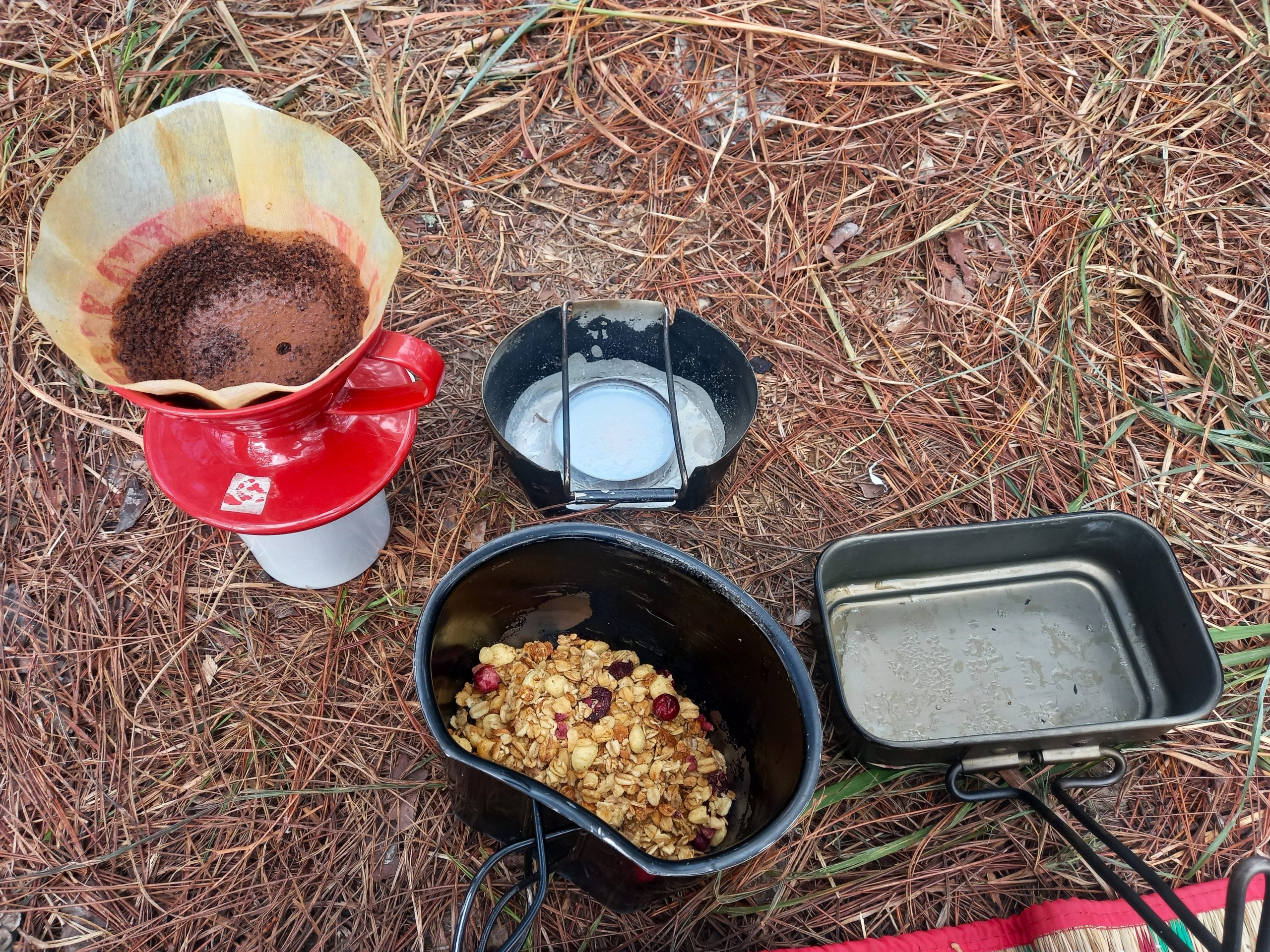
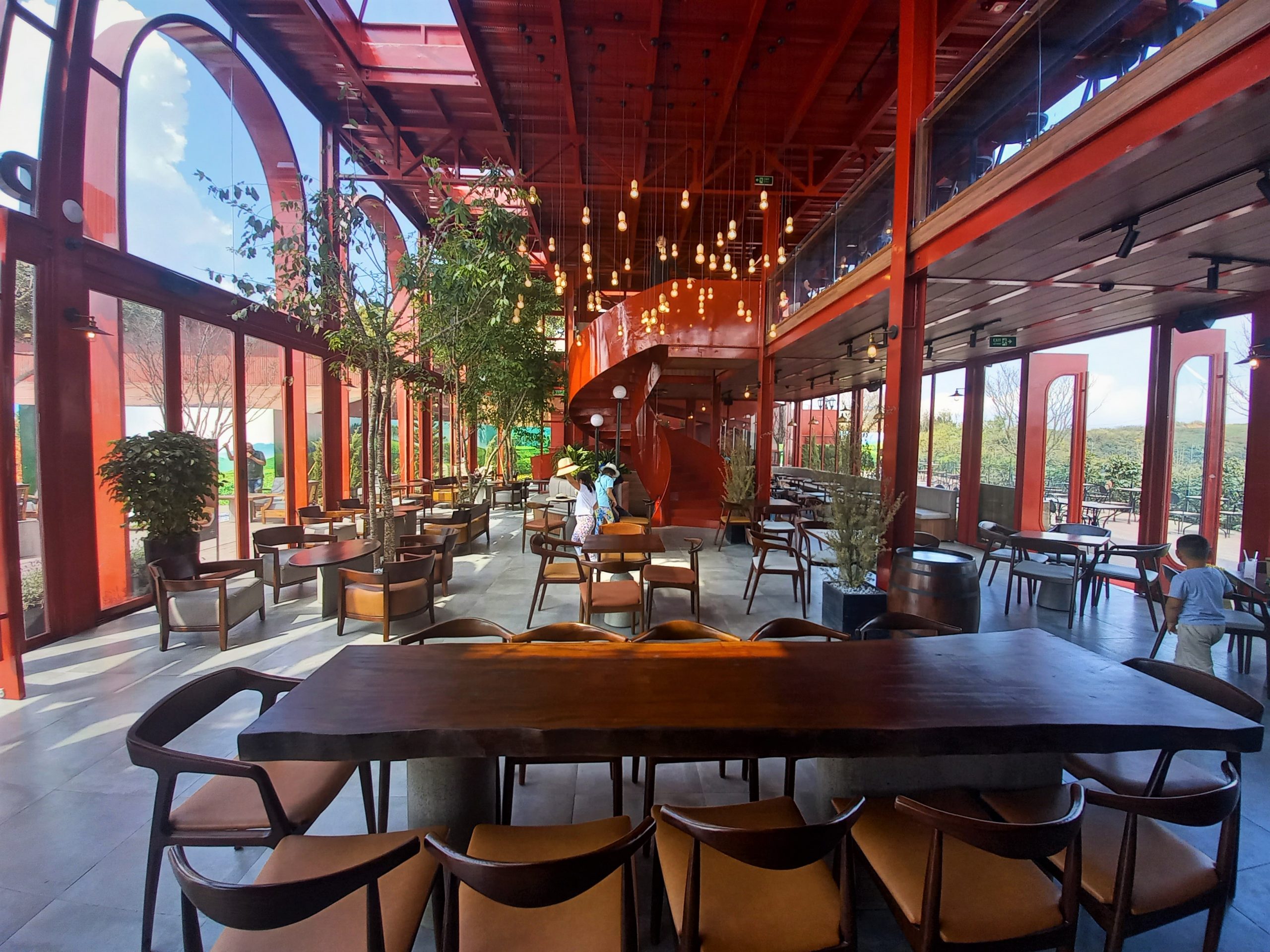
Equipment Check-List:
Below is a brief (far from exhaustive) equipment check-list for camping, hiking and cloud-hunting in the Cầu Đất highlands. I’ve written this assuming that most travellers will bring their own equipment, but there’s also the possibility of renting a tent somewhere in nearby Dalat (ask around). To a certain extent, the success of your camping trip hinges on how prepared you are. I haven’t covered everything here – just some essentials and optional extras which I personally like having with me. If you’ve camped in other places in Vietnam, you’ll already have the equipment down to an art. It certainly isn’t necessary to have all the modern, trendy camping gadgets and accessories in order to have a highly successful camping trip. In fact, to a certain degree, you can end up making yourself too comfortable if you bring too much equipment; and then it doesn’t really feel like camping anymore. However, having the basics does make all the difference – being too cold at night, for example, is pretty miserable. The following list is rambling and in no particular order (the annotated picture below might also be helpful):
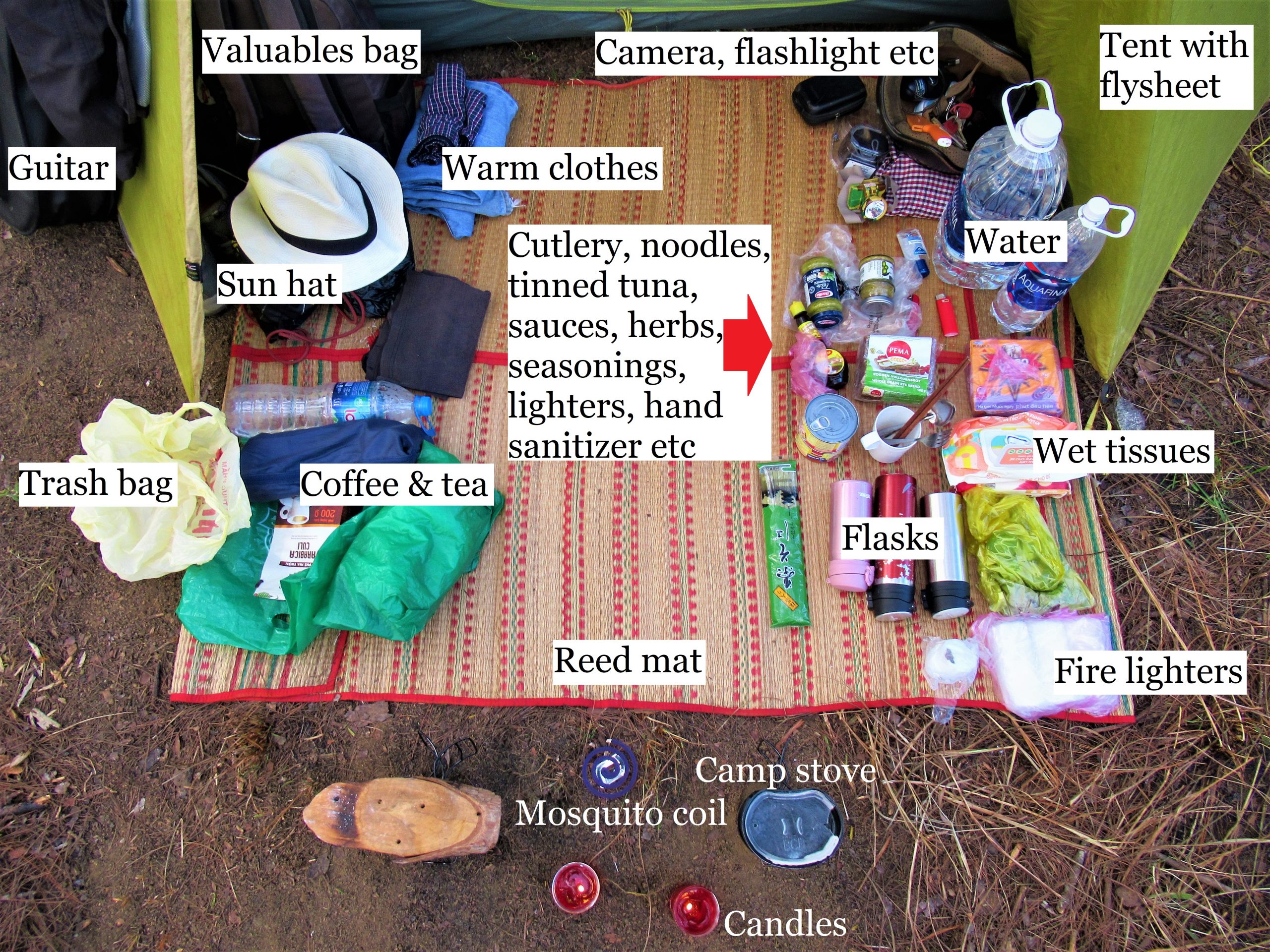
Check-List: Tent or camping hammock (I much prefer the former, but both available to buy in Vietnam; try the FanFan stores in several cities), cell phone, Viettel SIM card and data (best coverage in the boonies), pre-load Google Maps satellite view of potential camping areas before departure, USB power-bank, flashlight (with extra batteries or a USB-charged flashlight is a good option), money stashed in three different places (in your luggage, your motorbike, and about your person), a camp stove, firelighters (cồn khô in Vietnamese; available in most local countryside stores), a couple of cigarette lighters, food and snacks (dried and tinned food is easiest, but you can be surprisingly creative when it comes to camping food), big bottles of water (5-6 litre bottles are available in most stores), a water filter (optional), thermos flasks (for storing boiled water), coffee and tea, local liquor (rượu), warm clothes, socks (underrated camping asset – great for walking around your campsite without getting sandy or dirty feet), a mat for sitting on, sandals and a pair of decent shoes (for hiking), a good camera (if you really want to take great photos of the clouds), motorbike check-up prior to departure (you don’t want to breakdown in the middle of nowhere; punctures are common – I use tubeless tyres that have served me well for years), reading material or a Kindle, long-burning candles (comforting at night, safer, less effort and less attention-drawing than a campfire), mosquito coil and bug spray, guitar/ukulele (optional), cutlery, a good knife, waterproof rain-suit, sunscreen, toothbrush, towel, GIVI box or bungees for securing your luggage on your motorbike, inflatable sleeping mat or yoga mat (makes all the difference if you actually want to get any sleep), sleeping bag, wet ‘baby’ tissues (great for cleaning utensils), hand sanitizer, passport, lots of common sense.

Safety & Hazards:
Camping in the Cầu Đất Highlands is a lot of fun, but there are several precautions to take and potential hazards to be aware of. Camping is an increasingly popular activity across Vietnam, but especially in the mountains and forests of the Central Highlands surrounding Dalat. Anyone who decides to camp should do so as responsibly as possible. Below are a few things to keep in mind when camping in this region:
- Fires
- Rivers & Dams
- Trash & Environment
- Personal Safety & Possessions
- Animals & Wildlife
- People & Authorities
- Riding Off-Road

[Back]
Fires: It should go without saying that if you make a campfire, you need to be extremely careful, especially in the dry season, when everything is crisp, brittle and easy to ignite. At this time of year, the forests are very arid and fire can spread quickly and easily. What’s more, the majority of trees in the Cầu Đất forests are pine, which is highly flammable. Be sensible: if you make a campfire, keep it small and under control, and don’t take anything for granted.
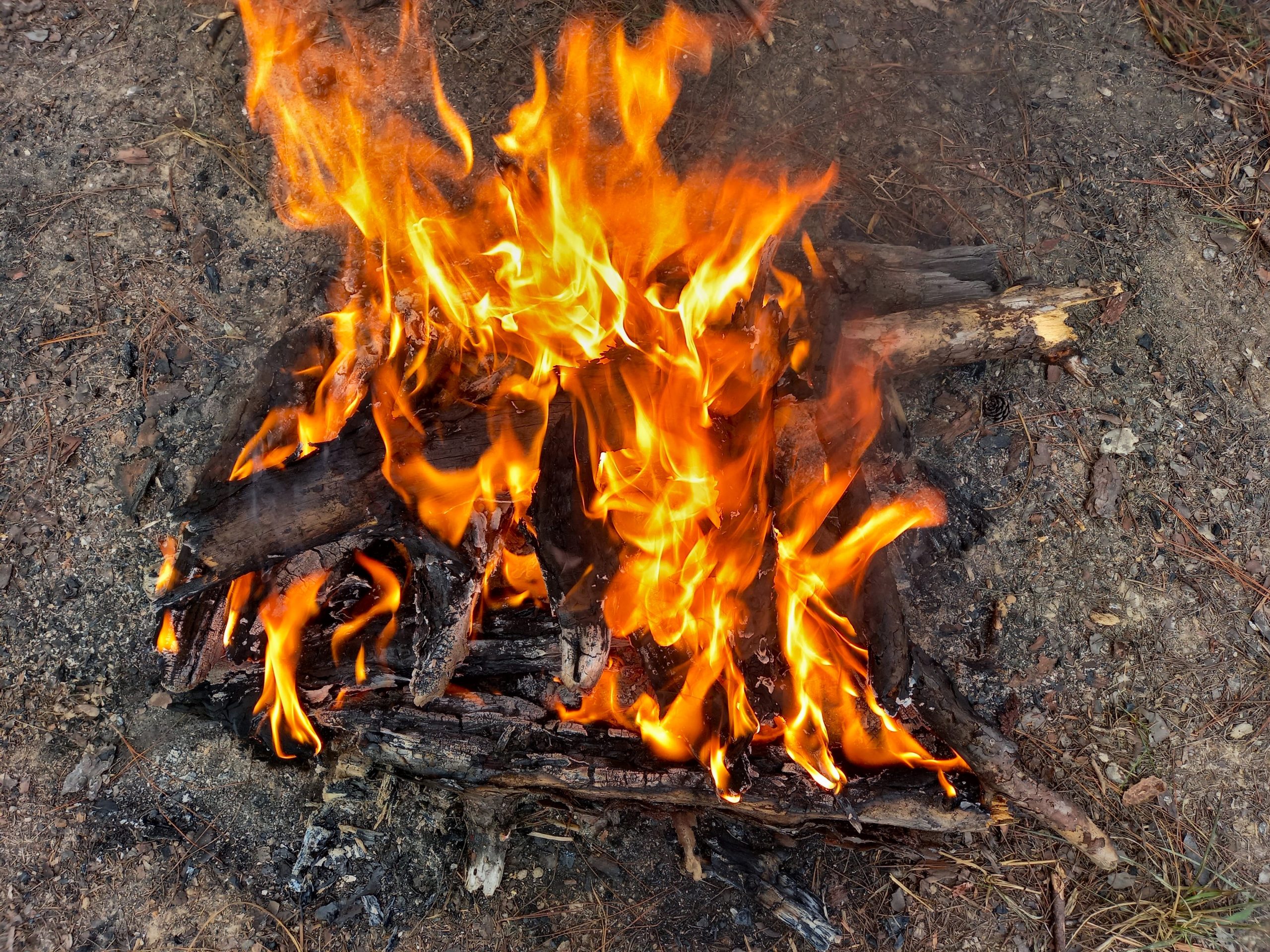
[Back]
Rivers & Dams: In Vietnam, almost every river of any size is dammed at some point along its course – indeed, often at multiple points. This means that the water flow of many rivers is regulated by dams upstream. Indeed, this is the case with the Đa Nhim River, which carves a pretty valley below the Cầu Đất camping area outlined in this guide. The water level of the river changes dramatically at least twice every day when the sluices of the dam are opened and closed. As a result, you must be extremely careful when choosing a campsite next to water or when bathing in the river. Make sure you pitch your tent above the high water mark, not on a ‘beach’, because the latter may be flooded under a metre of water if the sluices are opened upstream. Likewise, when swimming in rivers be careful of a sudden change in flow and volume if the dams open their gates. What’s more, if you’re camping in the rainy season (May-November), heavy rainfall upstream will swell the rivers considerably downstream, often resulting in dangerous flash floods.
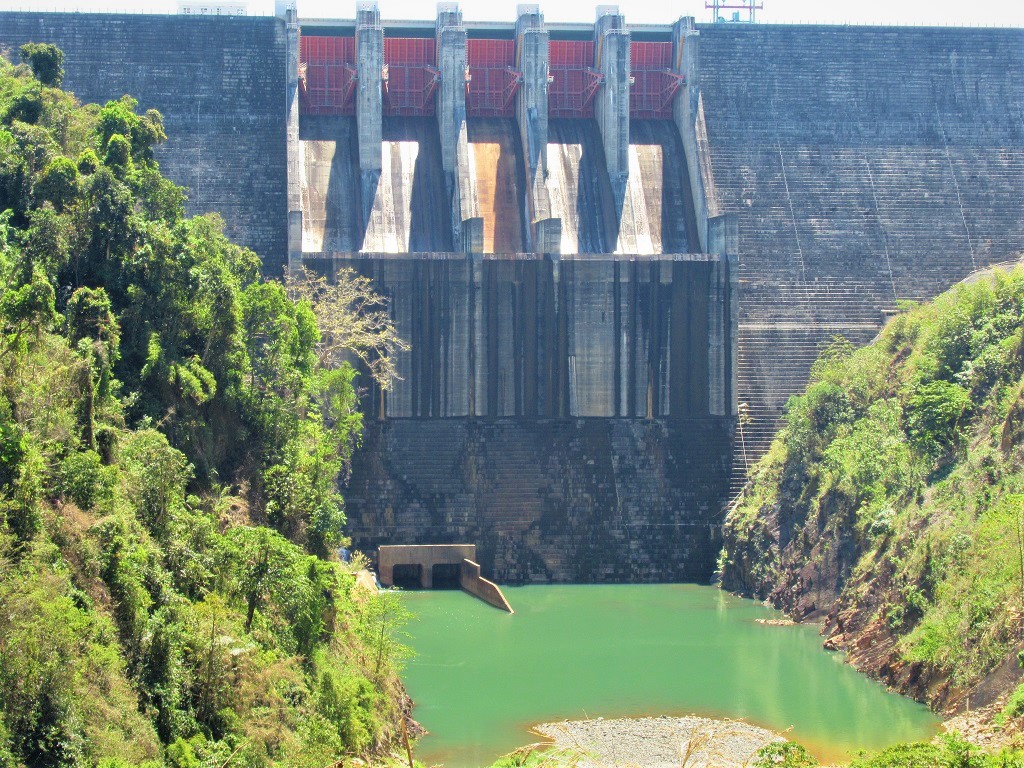
[Back]
Trash & Environment: It is a sad fact that litter is a huge problem in the Vietnamese countryside, especially ‘casual items’, such as instant noodle packages, soft drink cans, water bottles, candy wrappers, and little sachets of shampoo. Trash is not only discarded by people living locally but also by travelling visitors: indeed, some of the worst-affected areas in Vietnam are the most-popular tourist destinations, including camping spots. Set an example by making sure you leave your campsite spotless. Try to limit the amount of single-use plastic you consume while camping by bringing along items such as flasks, reusable food containers, and a water filter. Any litter you do generate, tie up in a bag and dispose of properly in the nearest town the next day. When going to the toilet outside, dig a little hole in the ground and cover it up again. This serves two purposes: it will enrich the soil and won’t ‘disturb’ any passersby.
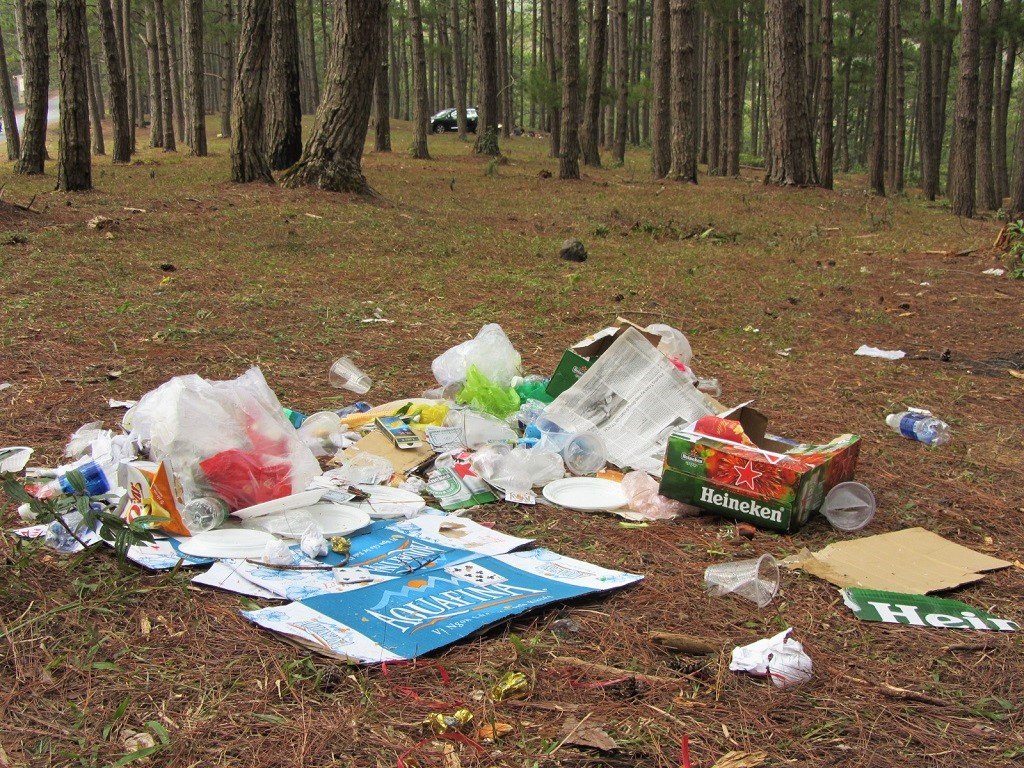
[Back]
Personal Safety & Possessions: Vietnam is generally a very safe country in which to travel. But it’s still wise to be careful with your most valuable possessions. At night, lock the wheel of your motorbike and keep it close to your tent. I also leave my bike facing in the direction of ‘escape’, if for some reason I need to make a quick exit during the night (bad weather, perhaps, or some unforeseen circumstance). When you go to sleep, make sure you have all of your most important and valuable possessions with you inside the tent, such as money, passport, phone etc. I also keep my knife at arm’s reach in the tent at night. UXO (unexploded ordnance) leftover from the wars of the last century is still a danger in Vietnam (although generally not is this particular region). Use your common sense: don’t forge a path into untrodden forest and jungle, don’t dig deep holes in the ground, and don’t touch any metallic object you see in the earth.

[Back]
Animals & Wildlife: Most of the big animals and predators that used to roam this region – tigers, white rhino, elephants, black bears – are now long gone: hunted and poached to near extinction. Nonetheless, nighttime can still be a scary and sobering experience: the darkness belongs to animals, not humans. You get a real sense of this as you lie in your tent, listening to the chorus of animals and insects outside in the big, black landscape. Don’t leave food outside your tent at night: clean your utensils, stash your food in a container, and tie up your litter in a bag. Snakes and mosquitoes are probably the most dangerous animals you’re likely to encounter, neither of which like fire. Snakes, apparently, don’t like heavy footfall and are unlikely to seek out a place of human activity. (I’ve seen many snakes in Vietnam, but none when I’ve camped.) For mosquitoes, burn a coil throughout the evening and night, and bring bug spray if you need it. In the night, there are occasional howlings, animal calls, and rustling in the trees and brush. It takes some getting used to, but after a few camping trips, these nighttime sounds become a comfort rather than a concern. When I was camping in the Cầu Đất region, I got up in the middle of the night to go to the toilet and saw a feline of some sort, perhaps a leopard cat.

[Back]
People & Authorities: I’ve camped dozens of times all over Vietnam: I’ve never been told not to camp and I’ve never had a problem with people or local authorities. However, as a general rule, try not to draw attention to yourself: wild camping is still quite unusual in Vietnam, so anyone who sees a traveller (especially a foreign one) setting up their tent in the middle of nowhere will naturally be curious or even, in some cases, suspicious. Try to be as inconspicuous as possible: it’s best to make sure no one sees you setting up camp and that you aren’t visible from any road, lane or pathway. This is because you don’t want to attract the curiosity of any passersby. If you do encounter anybody, the right thing to do is to ask permission to camp: in almost every situation in my experience, people will be happy to let you (albeit confused as to why you’d want to). And, obviously, pay attention to your surroundings: make sure you’re not camping on someone’s farmland or close to a military post or a national border.

[Back]
Riding Off-Road: In order to find the best possible camping spots in the Cầu Đất highlands, it will almost certainly be necessary to ride off-road for some distance. Paved back-roads turn into pot-holed lanes, dirt roads into rocky goat paths and narrow footpaths. Riding off-road can be tough, slow and dangerous, especially if, like me, your motorbike wasn’t designed for such use. However, with care and patience even an old automatic like my motorbike can do it. Ride slowly and carefully, because punctures and falls are highly likely if you ride recklessly off-road. Also, riding on dirt roads is much easier in the dry season: the same roads when wet can be extremely difficult and treacherous. In the Cầu Đất region, there’s a network of narrow concrete lanes that are excellent for riding deep into the countryside. However, the gradient can be extremely steep: going down is easy, but getting back up – especially with your motorbike loaded with camping equipment – is much more difficult.
*Respectful Camping: If you wild camp in Vietnam, please do so respectfully & safely. Be prepared, be sensible, be conscious of the people & natural environment around you. Please read the Safety & Hazards section.

*Disclosure: All content on Vietnam Coracle is free to read and independently produced. I’ve written this guide because I want to: I enjoy camping in Cầu Đất and I want my readers to know about it. For more details, see the Disclosure & Disclaimer statements and About Page

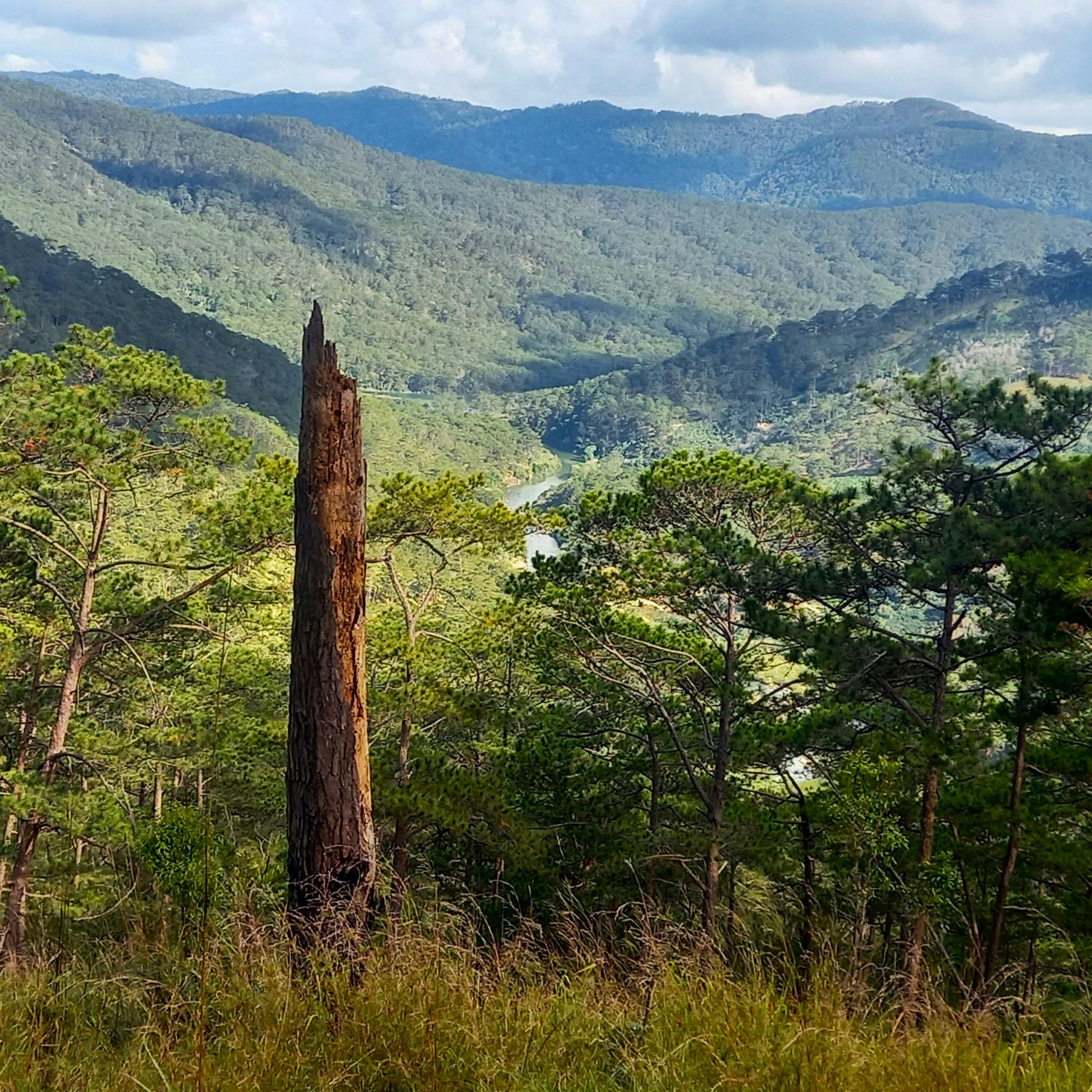
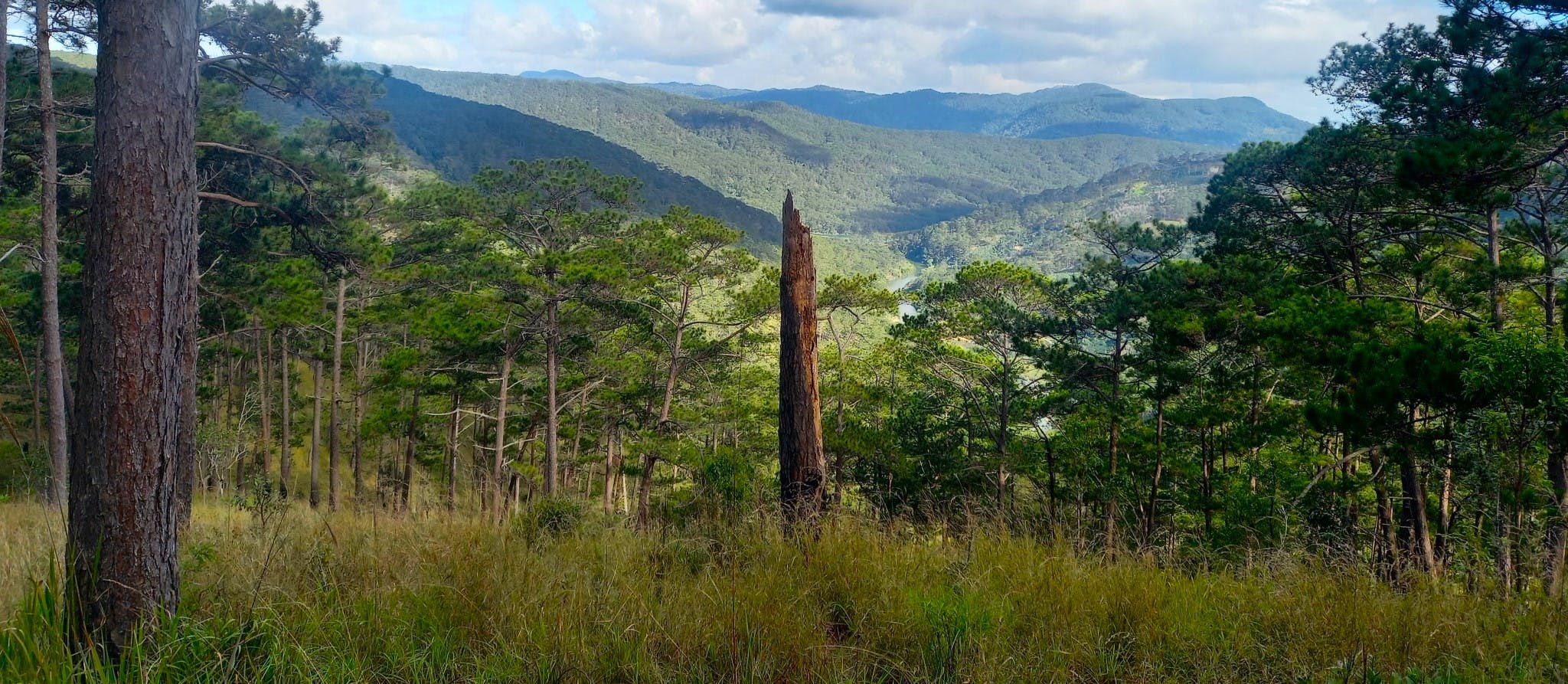




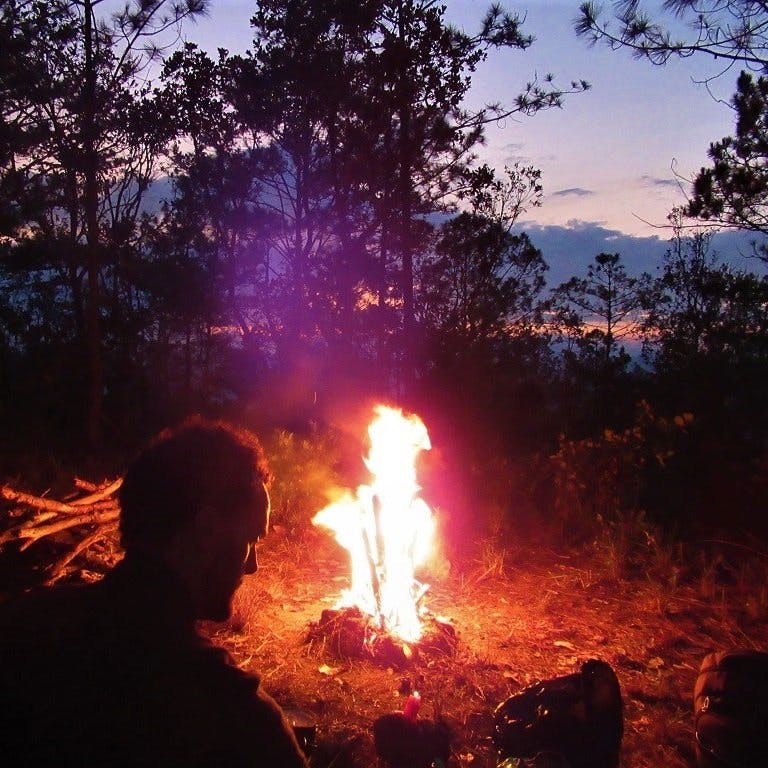

Just started reading your website. Very well done. Thanks for sharing.
I recently returned home (Da Nang) after hiking and camping in the California Rockies, wondering how and where to get to do more camping in Central Vietnam.
Hi Erika,
I would just head inland – there are lots of good mountainous regions due west and southwest of Da Nang. For example, there are potential camping opportunities on the Quang Ngai Loop, not too far from Da Nang. Or the inland sections of the Golden Loop, etc.
Best,
Tom
Tnx Tom!
That’s an interesting article, Tom. Brings back memories for me!
Last December, my wife and I went on a day trip from Dalat to Cau Dat. It was a fantastic scenic ride and we enjoyed crashing with a banh mi in the fields, watching the clouds go by and taking in the tea plantations.
Although, I must have accidentally trespassed across someone’s land because we came up against a rowdy pack of dogs who were probably just guarding their land – oops! This is my nightmare as I’m not good with most dogs.
We suddenly made for a quick exit. The rough dirt road was full of potholes though. So I had to pull back the throttle and hope that I would make it up the hill and out of there. As soon as I caught a glimpse of QL20, I felt such a big sigh of relief.
Thanks, Tomas.
That sounds like an eventful trip! It’s amazing how many ‘guard’ dogs there are in Vietnam now – both in the cities and the countryside.
Best,
Tom
I rode the Pine Tree Road recently following your suggestion and thoroughly enjoyed it. I rode off the main road a bit and found an absolutely gorgeous, perfect campsite in the pine forest. The weather was perfect for it; warm sun, fresh breeze and the sound of the wind in the trees. Unfortunately I didn’t have any camping gear as it would have been idyllic especially with a BBQ chicken purchased down by the lake. Cau Dat looks like another area with the same potential. I visited the wind farm but as you say it was a bit of a tourist circus.
I have been shocked by the amount of rubbish everywhere this trip to Vietnam. The country I have travelled through so far is being buried under it. Fly tipping everywhere as well as just general littering. The other issue has been air pollution. It is so bad that I have developed bronchitis. It seems that everywhere someone is burning something and it is rare to be free of smoke of some sort wherever I go. It is a real pity that Vietnam’s beauty is being degraded by this. Hopefully as the country becomes wealthier there will be a reaction against it.
Hi Tim,
Glad you enjoyed the Pine Tree Road. That’s a great area to camp – we were there recently, too.
Yes, air pollution and litter have long been big issues for Vietnam – I mention it in this guide and many others. But it’s also a very complex and nuanced issue. It is frustrating, but there aren’t any perfect or easy solutions. Awareness is growing, attitudes are changing, but actions are proving more difficult to change. Wealth doesn’t necessarily have anything to do with it – the more money you have in Vietnam, the more likely you are to own a car, and the more you consume and throw away as a general rule. I recommend attempting to lead by example: show, don’t tell – no one reacts well to being ‘told’ what to do, even if it’s the right thing to do 🙂
Best,
Tom
Well on a more positive note with regards to the rubbish issue I have just ridden the TSD joining from the QL26 the QL14E and interestingly the country towns along the way and the route itself are kept relatively rubbish free. I often noticed locals cleaning up in the towns and villages.
Great.